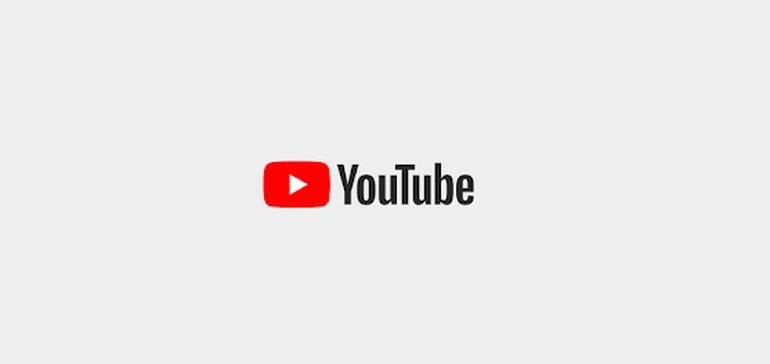SOCIAL
YouTube Generated $28.8 Billion in Ad Revenue in 2021, Fuelling the Creator Economy

While TikTok continues its meteoric rise, and looks set to become an even more influential platform this year, YouTube remains the clear leader in the online video space. And it looks set to maintain the top spot for one key reason – its revenue-sharing program, which sees billions shared with creators each year, and which no other platform is close to matching just yet, in terms of a sustainable creator monetization model.
YouTube’s Partner Program, which is now well embedded, and established within its own ecosystem, is now a key driver of the broader creator economy. And this week, as part of parent company Alphabet’s Q4 performance update, we got some more insight into just how significant this element has become.
As per Alphabet’s report, YouTube generated $8.6 billion in ad revenue in Q4 2021, while for the full year, YouTube brought in $28.8 billion in advertising income.
As you can see, that’s a significant jump on YouTube’s 2020 performance. And with around 55% of YouTube ad revenue going to creators, that means that YouTube paid creators more than $15 billion throughout 2021, a huge chunk of the overall creator economy funding.
Though that’s not exact. YouTube does share 55% of its ad revenue with creators, but with its move to monetize all content, not just videos in its Partner Program, as of November 2020, that does mean that the revenue split is less direct than a clear 55% of its overall take.
But even so, it’s still a huge amount, and a massive lure for YouTube, which the platform will continue to use to try and sway creators away from TikTok, by offering more incentive, more opportunity and greater rewards for their efforts.
YouTube, of course, has also been looking to combat the rise of TikTok with its own alternative in ‘Shorts’, which, according to Alphabet CEO Sundar Pichai, continues to see significant momentum.
“YouTube Shorts continues to drive significant engagement. We just hit five trillion all time views, and have over fifteen billion views each day globally. This is helping our creator community reach newer and bigger audiences. In fact, more people are creating content on YouTube than ever before. Last year, the number of YouTube channels that made at least $10,000 in revenue was up more than 40% year over year. And we’re continuing to improve support for Artists and Creators.”
Pichai also notes that more creators are now earning money from YouTube’s non-ad products, including Super Chat and Channel Memberships, while its $100 million Shorts Fund is now available in more than one-hundred countries.
Creator funds like this can be problematic, in that the amount remains static, while usage changes (as recently explained by YouTube creator Hank Green). But YouTube, with its expanded funding models, is in a much more sustainable, profitable and beneficial position for creators than emerging platforms like TikTok, which is still working out how to best facilitate creator funding within short video clips.
Short videos are too short to insert mid-stream ads, which makes direct revenue attribution more difficult. That’s pushed TikTok to explore other alternatives, like brand partnerships, though it remains to be seen whether TikTok can establish enough of a business model on this front to keep its most popular creators around long term.
Another option that TikTok’s exploring is eCommerce, and enabling creators to generate revenue by selling products tied to their TikTok clips.
Which YouTube, too, is testing:
As per Pichai:
“We’re making it easier for viewers to buy what they see – and simpler for advertisers to drive action with innovative solutions like product feeds in Video Action Campaigns and emerging formats like live commerce. Backcountry.com generated a 12:1 return-on-ad-spend with product feeds in 2021 and plans to double its investment in 2022. While Samsung, Walmart, and Verizon partnered with creators to host shoppable holiday livestream events in the US”
Just as this is a key opportunity on TikTok, it’s also similarly significant on YouTube – and potentially, even more so, with many people searching on YouTube for product info, while YouTube clips are also linked to Google searches.
That could make this another valuable avenue for YouTube creator monetization, and another element in which YouTube could beat TikTok out, with more incentive for big-name stars.
Also interesting – Alphabet says that it will test some of its eCommerce ideas for YouTube in India first “because we can get quicker feedback”.
“A very dynamic, youthful population. And so we’ll do it there, and then roll it out globally. So we are constantly looking for opportunities like that.”
And in another direct assault on TikTok, YouTube’s also now testing commerce links in Shorts:
“Super early also on testing how shopping can be integrated with Shorts. And so, again, early, but I find the opportunity space here pretty broad, and it’s exciting.”
It’s interesting to consider the broader chess game at play here, and how the bigger players are looking to counter the growth of TikTok where they can, and hit the rising platform where it hurts, in terms of monetization and creator promotion tools.
TikTok is the cool app of the moment, and it’s definitely been great at capturing attention. But just like Vine before it, creator monetization remains a challenge – and already TikTok creators are calling for a bigger slice of the revenue pie, under threat of them potentially taking their content to other platforms instead.
Which is exactly what happened to Vine, with its top stars calling for more money as the app continued to grow, which eventually lead to them migrating to other apps.
TikTok is far bigger now that Vine ever was, and seems too big, really, to fail at this stage. But then again, if this does become a key sticking point, and creators do take their talents, and audiences, to other apps, it remains a possibility that TikTok might not make it in the long term.
Meanwhile, YouTube continues to go from strength to strength, and iterate on its already established monetization models. TikTok may be popular, but the battle for online video supremacy is still ruled by the incumbent, and will be for the foreseeable future at least.
Source link
SOCIAL
Snapchat Explores New Messaging Retention Feature: A Game-Changer or Risky Move?

In a recent announcement, Snapchat revealed a groundbreaking update that challenges its traditional design ethos. The platform is experimenting with an option that allows users to defy the 24-hour auto-delete rule, a feature synonymous with Snapchat’s ephemeral messaging model.
The proposed change aims to introduce a “Never delete” option in messaging retention settings, aligning Snapchat more closely with conventional messaging apps. While this move may blur Snapchat’s distinctive selling point, Snap appears convinced of its necessity.
According to Snap, the decision stems from user feedback and a commitment to innovation based on user needs. The company aims to provide greater flexibility and control over conversations, catering to the preferences of its community.
Currently undergoing trials in select markets, the new feature empowers users to adjust retention settings on a conversation-by-conversation basis. Flexibility remains paramount, with participants able to modify settings within chats and receive in-chat notifications to ensure transparency.
Snapchat underscores that the default auto-delete feature will persist, reinforcing its design philosophy centered on ephemerality. However, with the app gaining traction as a primary messaging platform, the option offers users a means to preserve longer chat histories.
The update marks a pivotal moment for Snapchat, renowned for its disappearing message premise, especially popular among younger demographics. Retaining this focus has been pivotal to Snapchat’s identity, but the shift suggests a broader strategy aimed at diversifying its user base.
This strategy may appeal particularly to older demographics, potentially extending Snapchat’s relevance as users age. By emulating features of conventional messaging platforms, Snapchat seeks to enhance its appeal and broaden its reach.
Yet, the introduction of message retention poses questions about Snapchat’s uniqueness. While addressing user demands, the risk of diluting Snapchat’s distinctiveness looms large.
As Snapchat ventures into uncharted territory, the outcome of this experiment remains uncertain. Will message retention propel Snapchat to new heights, or will it compromise the platform’s uniqueness?
Only time will tell.
SOCIAL
Catering to specific audience boosts your business, says accountant turned coach

While it is tempting to try to appeal to a broad audience, the founder of alcohol-free coaching service Just the Tonic, Sandra Parker, believes the best thing you can do for your business is focus on your niche. Here’s how she did just that.
When running a business, reaching out to as many clients as possible can be tempting. But it also risks making your marketing “too generic,” warns Sandra Parker, the founder of Just The Tonic Coaching.
“From the very start of my business, I knew exactly who I could help and who I couldn’t,” Parker told My Biggest Lessons.
Parker struggled with alcohol dependence as a young professional. Today, her business targets high-achieving individuals who face challenges similar to those she had early in her career.
“I understand their frustrations, I understand their fears, and I understand their coping mechanisms and the stories they’re telling themselves,” Parker said. “Because of that, I’m able to market very effectively, to speak in a language that they understand, and am able to reach them.”Â
“I believe that it’s really important that you know exactly who your customer or your client is, and you target them, and you resist the temptation to make your marketing too generic to try and reach everyone,” she explained.
“If you speak specifically to your target clients, you will reach them, and I believe that’s the way that you’re going to be more successful.
Watch the video for more of Sandra Parker’s biggest lessons.
SOCIAL
Instagram Tests Live-Stream Games to Enhance Engagement

Instagram’s testing out some new options to help spice up your live-streams in the app, with some live broadcasters now able to select a game that they can play with viewers in-stream.
As you can see in these example screens, posted by Ahmed Ghanem, some creators now have the option to play either “This or That”, a question and answer prompt that you can share with your viewers, or “Trivia”, to generate more engagement within your IG live-streams.
That could be a simple way to spark more conversation and interaction, which could then lead into further engagement opportunities from your live audience.
Meta’s been exploring more ways to make live-streaming a bigger consideration for IG creators, with a view to live-streams potentially catching on with more users.
That includes the gradual expansion of its “Stars” live-stream donation program, giving more creators in more regions a means to accept donations from live-stream viewers, while back in December, Instagram also added some new options to make it easier to go live using third-party tools via desktop PCs.
Live streaming has been a major shift in China, where shopping live-streams, in particular, have led to massive opportunities for streaming platforms. They haven’t caught on in the same way in Western regions, but as TikTok and YouTube look to push live-stream adoption, there is still a chance that they will become a much bigger element in future.
Which is why IG is also trying to stay in touch, and add more ways for its creators to engage via streams. Live-stream games is another element within this, which could make this a better community-building, and potentially sales-driving option.
We’ve asked Instagram for more information on this test, and we’ll update this post if/when we hear back.
-

 PPC7 days ago
PPC7 days ago19 Best SEO Tools in 2024 (For Every Use Case)
-
SEARCHENGINES6 days ago
Daily Search Forum Recap: April 19, 2024
-
SEARCHENGINES7 days ago
Daily Search Forum Recap: April 18, 2024
-

 WORDPRESS6 days ago
WORDPRESS6 days agoHow to Make $5000 of Passive Income Every Month in WordPress
-

 SEO7 days ago
SEO7 days ago25 WordPress Alternatives Best For SEO
-

 WORDPRESS5 days ago
WORDPRESS5 days ago13 Best HubSpot Alternatives for 2024 (Free + Paid)
-

 WORDPRESS6 days ago
WORDPRESS6 days ago7 Best WooCommerce Points and Rewards Plugins (Free & Paid)
-

 MARKETING6 days ago
MARKETING6 days agoBattling for Attention in the 2024 Election Year Media Frenzy
















You must be logged in to post a comment Login